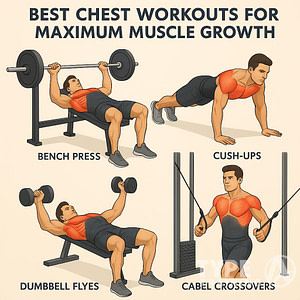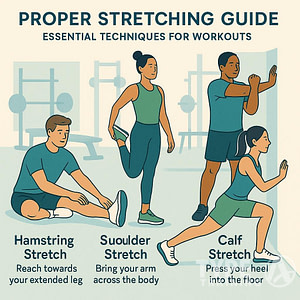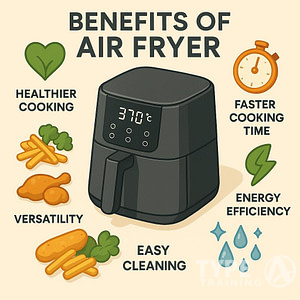Strength training is an essential aspect of overall health and wellbeing, particularly for seniors. As we age, our muscles tend to weaken, leading to a decline in physical function and overall quality of life. However, regular strength training can help seniors maintain their independence, improve their cognitive function, and reduce their risk of developing various health conditions. In this section, we will explore the health benefits of strength training for seniors, including its impact on cardiovascular health, depression, stress, cognitive decline, and bone density.
1. Cardiovascular Health: Strength training has been shown to have a positive impact on cardiovascular health in seniors. By strengthening the heart and improving blood flow, seniors who engage in regular strength training can reduce their risk of heart disease and stroke. Additionally, strength training can help lower
2. Depression and Stress: Strength training has also been shown to have a positive impact on mental health in seniors. Research has found that seniors who engage in regular strength training are less likely to experience depression and anxiety. Additionally, strength training has been shown to reduce stress levels, improve sleep quality, and boost overall mood.
3. Cognitive Decline: Strength training can also help seniors maintain their cognitive function as they age. Studies have shown that seniors who engage in regular strength training have better memory, attention, and problem-solving skills than those who do not. Additionally, strength training can help reduce the risk of developing dementia and other cognitive disorders.
Popular posts:
4. Bone Density: As we age, our bones tend to weaken, leading to an increased risk of fractures and osteoporosis. However, strength training can help improve bone density and reduce the risk of these conditions. By putting stress on the bones during exercise, seniors can stimulate the growth of new bone tissue, leading to stronger, healthier bones.
5. Independence and Quality of Life: Finally, strength training can help seniors maintain their independence and improve their overall quality of life. By improving physical function and reducing the risk of falls and injuries, seniors who engage in regular strength training can maintain their ability to perform daily activities and enjoy their hobbies and interests.
Here’s a quick and easy reference for the various health benefits of strength training for seniors.
| Health Benefit | Description |
|---|---|
| Cardiovascular Health | Strength training can improve heart health, reduce |
| Depression and Stress | Strength training can reduce the risk of depression and anxiety, improve mood, and reduce stress levels. |
| Cognitive Decline | Strength training can improve memory, attention, and problem-solving skills, and reduce the risk of dementia and other cognitive disorders. |
| Bone Density | Strength training can improve bone density, reduce the risk of fractures and osteoporosis, and promote healthy bones. |
| Independence and Quality of Life | Strength training can improve physical function, reduce the risk of falls and injuries, and maintain independence and overall quality of life. |
The Importance of Strength Training for Older Adults
Strength training is crucial for older adults to maintain a healthy lifestyle. As we age, muscle mass decreases, leading to reduced strength and mobility, which can affect daily tasks and increase injury risk. Strength training helps combat these effects, improving quality of life by increasing muscle mass, enhancing bone density, and reducing pain.
Regular strength training builds and maintains muscle mass, preventing injuries and improving daily task performance. It also boosts bone density, reducing the risk of fractures and falls. Strengthening major muscle groups improves posture, stability, and flexibility, reducing back pain and other injuries.
Strength training enhances independence and quality of life by maintaining strength and mobility, keeping us active and improving physical and mental health.
Popular exercises for older adults include body-weight exercises, resistance training with free weights or soup cans, and yoga. Warming up and focusing on proper technique are essential to avoid injury. Consult a doctor or trainer if you have pre-existing conditions. A certified trainer can assess your range of motion, strength, balance, and fitness level to tailor a workout plan to your needs and prevent potential problems.
Safe Practices in Strength Training for Seniors
Strength training is an excellent way for seniors to maintain their physical function and overall health. However, it is essential to practice safe and proper techniques to prevent injuries and maximize the benefits of exercise. In this section, we will explore some safe practices in strength training for seniors, including the importance of proper form, consulting a doctor, avoiding injuries, and making modifications.
1. Proper Form: Proper form is crucial when it comes to strength training. Seniors should focus on maintaining proper posture, engaging the correct muscles, and avoiding jerky or sudden movements. It is essential to start with lighter weights and gradually increase the weight as strength and endurance improve. Seniors should also avoid holding their breath during exercise and breathe in and out steadily.
2. Consulting a Doctor: Before starting a strength training program, seniors should consult with their doctor. A doctor can assess their overall health and provide recommendations on the best exercises and intensity levels. Additionally, seniors with pre-existing medical conditions or injuries should seek guidance from their doctor on how to modify exercises to avoid aggravating their condition.
3. Avoiding Injuries: Seniors should take steps to avoid injuries during strength training. This includes warming up before exercise, stretching after exercise, and avoiding overexertion. Seniors should listen to their bodies and stop exercising if they experience pain or discomfort. Additionally, seniors should avoid exercises that put excessive stress on the joints, such as heavy squats or overhead presses.
4. Modifications: Seniors may need to make modifications to their strength training program to accommodate their age and physical abilities. This may include using lighter weights, performing fewer repetitions, or avoiding certain exercises altogether. Seniors can work with a personal trainer or physical therapist to develop a customized strength training program that meets their individual needs.
5. Injury Prevention: Seniors can take steps to prevent injuries during strength training. This includes using appropriate equipment, such as comfortable and supportive
Quick And Easy Reference For The Safe Practices In Strength Training For Seniors
| Safe Practice | Description |
|---|---|
| Proper Form | Seniors should focus on maintaining proper posture, engaging the correct muscles, and avoiding jerky or sudden movements. It is essential to start with lighter weights and gradually increase the weight as strength and endurance improve. |
| Consulting a Doctor | Seniors should consult with their doctor before starting a strength training program to assess their overall health and receive recommendations on the best exercises and intensity levels. |
| Avoiding Injuries | Seniors should warm up before exercise, stretch after exercise, and avoid overexertion. They should listen to their bodies and stop exercising if they experience pain or discomfort. Additionally, they should avoid exercises that put excessive stress on the joints. |
| Modifications | Seniors may need to make modifications to their strength training program to accommodate their age and physical abilities. This may include using lighter weights, performing fewer repetitions, or avoiding certain exercises altogether. |
| Injury Prevention | Seniors should use appropriate equipment, take breaks between exercises, avoid exercising the same muscle group two days in a row, and stay hydrated and fueled with nutritious foods. |
The Best Strength Training Exercises for Seniors
Strength training is essential for older adults to maintain muscle mass, improve bone density, and prevent falls. Incorporating strength training exercises into your fitness routine can also help you maintain flexibility, balance, and stability. Here are some of the best strength training exercises for older adults:
Squats
Squats are a great way to strengthen your lower body and improve your balance. Start by standing with your feet shoulder-width apart, then slowly lower your body as if you are sitting in a chair. Keep your knees over your ankles, and make sure your back is straight. Repeat for 10-15 repetitions.
Planks
Planks are an excellent exercise for improving core strength and stability. Start in a push-up position, then lower your body onto your forearms. Keep your body straight and hold for 30-60 seconds.
Chair Dips
Chair dips are a great way to strengthen your triceps and improve upper body strength. Sit on the edge of a sturdy chair with your hands gripping the edge of the seat. Slowly lower your body towards the ground, then push back up. Repeat for 10-15 repetitions.
Knee Lifts
Knee lifts are a great exercise for improving balance and stability. Stand behind a sturdy chair and hold onto the back for support. Slowly lift one knee towards your chest, then lower it back down. Repeat with the other leg for 10-15 repetitions.
Step-Ups
Step-ups are a great way to strengthen your lower body and improve balance. Find a sturdy step or bench and step up with one foot, then step back down. Repeat with the other foot for 10-15 repetitions.
Walking
Walking is an excellent way to improve cardiovascular health and maintain muscle mass. Aim for at least 30 minutes of brisk walking every day.
Swimming
Swimming is a low-impact exercise that is great for improving cardiovascular health and maintaining muscle mass. It is also a great way to improve flexibility and reduce joint pain associated with arthritis.
Stretching
Stretching is an essential part of any fitness routine, especially for older adults. It can help improve flexibility, reduce muscle soreness, and prevent injury. Incorporate stretching exercises into your fitness routine, such as hamstring stretches, shoulder stretches, and hip stretches.
Upper Body Strength Training for Seniors
Upper body strength training is an essential aspect of overall fitness for seniors. By focusing on the muscles in the arms, chest, and back, seniors can improve their physical function, maintain their independence, and reduce their risk of injury. In this section, we will explore upper body strength training for seniors, including the muscle groups involved and some exercises to consider.
The upper body is composed of several muscle groups, including the arms, chest, and back. The biceps and triceps are the muscles in the arms that are responsible for bending and straightening the elbow. The chest muscles, also known as the pectorals, are responsible for pushing movements, such as pushing a door open or lifting a heavy object. The back muscles, including the latissimus dorsi and trapezius, are responsible for pulling movements, such as pulling a door closed or rowing a boat.
Here’s a sample upper body strength training routine for seniors:
- Bicep Curls: 2 sets of 10-12 reps, with 30 seconds of rest between sets.
- Hold a dumbbell in each hand and stand with your feet shoulder-width apart.
- Keep your elbows close to your body and curl the weights up towards your shoulders.
- Lower the weights back down to the starting position and repeat.
- Tricep Extensions: 2 sets of 10-12 reps, with 30 seconds of rest between sets.
- Hold a dumbbell in each hand and stand with your feet shoulder-width apart.
- Raise the weights above your head, keeping your elbows close to your head.
- Lower the weights behind your head, bending your elbows.
- Raise the weights back up to the starting position and repeat.
- Push-Ups: 2 sets of 8-10 reps, with 30 seconds of rest between sets.
- Start in a plank position, with your hands shoulder-width apart and your feet together.
- Lower your body towards the ground, keeping your elbows close to your body.
- Push your body back up to the starting position and repeat.
- Rows: 2 sets of 10-12 reps, with 30 seconds of rest between sets.
- Hold a dumbbell in each hand and stand with your feet shoulder-width apart.
- Bend forward at the waist, keeping your back straight.
- Lift the weights towards your chest, keeping your elbows close to your body.
- Lower the weights back down to the starting position and repeat.
- Chest Flys: 2 sets of 10-12 reps, with 30 seconds of rest between sets.
- Lie on your back on a bench or the floor, holding a dumbbell in each hand.
- Raise the weights above your chest, with your palms facing each other.
- Lower the weights out to the sides, keeping a slight bend in your elbows.
- Raise the weights back up to the starting position and repeat.
Seniors should start with lighter weights and gradually increase the weight as they become stronger. It is essential to maintain proper form, engage the correct muscles, and avoid jerky or sudden movements. Seniors should also listen to their bodies and stop exercising if they experience pain or discomfort.
Lower Body Strength Training for Seniors
Lower body strength training is essential for seniors to maintain overall fitness. The lower body consists of several muscle groups, including the quadriceps, hamstrings, and glutes. Squats are an excellent exercise for strengthening these muscle groups. Seniors can perform squats by standing with their feet shoulder-width apart, bending their knees, and lowering their hips until their thighs are parallel to the ground, creating a 90-degree angle. Other exercises to consider include lunges, step-ups, and leg presses. Seniors should start with lighter weights and gradually increase the weight as strength and endurance improve. It is essential to maintain proper form, engage the correct muscles, and avoid jerky or sudden movements.
Here’s a sample Lower body strength training routine for seniors:
- Squats: 2 sets of 10-12 reps, with 30 seconds of rest between sets.
- Stand with your feet shoulder-width apart.
- Bend your knees and lower your hips until your thighs are parallel to the ground, creating a 90-degree angle.
- Push back up to the starting position and repeat.
- Lunges: 2 sets of 10-12 reps on each leg, with 30 seconds of rest between sets.
- Stand with your feet shoulder-width apart.
- Step forward with one foot and lower your hips until both knees are bent at a 90-degree angle.
- Push back up to the starting position and repeat on the other leg.
- Step-Ups: 2 sets of 10-12 reps on each leg, with 30 seconds of rest between sets.
- Stand in front of a step or platform.
- Step up onto the platform with one foot, then step back down.
- Repeat on the other leg.
- Leg Press: 2 sets of 10-12 reps, with 30 seconds of rest between sets.
- Sit in a leg press machine with your feet on the platform.
- Push the platform away from your body, straightening your legs.
- Lower the platform back down to the starting position and repeat.
Seniors should start with lighter weights and gradually increase the weight as they become stronger. It is essential to maintain proper form, engage the correct muscles, and avoid jerky or sudden movements. Seniors should also listen to their bodies and stop exercising if they experience pain or discomfort.
Core Strength Training for Seniors
Core strength training is an essential aspect of overall fitness for seniors. By focusing on the muscles in the core, seniors can improve their physical function, maintain their independence, and reduce their risk of injury. In this section, we will explore core strength training for seniors, including the muscle groups involved and some exercises to consider.
The core is composed of several muscle groups, including the abdominals, obliques, and back muscles. The core muscles are responsible for stabilizing the torso and supporting the spine during movement. A strong core can help reduce the risk of injury and improve overall physical function, such as being able to lift objects safely.
When it comes to core strength training, seniors should focus on working all of these muscle groups to maintain balanced strength and function. Planks are an excellent exercise for strengthening the core muscles. Seniors can perform planks by starting in a push-up position, with their hands shoulder-width apart and their feet together. They should then lower their forearms to the ground and hold the position for 30 seconds to 1 minute. They can then rest for 30 seconds and repeat for 2-3 sets.
Here’s a sample Core strength training routine for seniors:
- Planks: 2 sets of 30 seconds to 1 minute, with 30 seconds of rest between sets.
- Start in a push-up position, with your hands shoulder-width apart and your feet together.
- Lower your forearms to the ground and hold the position for 30 seconds to 1 minute.
- Rest for 30 seconds and repeat for 2-3 sets.
- Sit-Ups: 2 sets of 10-12 reps, with 30 seconds of rest between sets.
- Lie on your back with your knees bent and your feet flat on the ground.
- Cross your arms over your chest and lift your upper body towards your knees.
- Lower your upper body back down to the starting position and repeat.
- Russian Twists: 2 sets of 10-12 reps on each side, with 30 seconds of rest between sets.
- Sit on the ground with your knees bent and your feet flat on the ground.
- Lean back slightly and lift your feet off the ground.
- Twist your torso to the left, then to the right, touching the ground on each side.
- Back Extensions: 2 sets of 10-12 reps, with 30 seconds of rest between sets.
- Lie face down on an exercise ball with your hands behind your head.
- Lift your upper body off the ball, squeezing your back muscles.
- Lower your upper body back down to the starting position and repeat.
Seniors should start with lighter weights and gradually increase the weight as they become stronger. It is essential to maintain proper form, engage the correct muscles, and avoid jerky or sudden movements. Seniors should also listen to their bodies and stop exercising if they experience pain or discomfort.
How to Incorporate Strength Training into Your Routine
Strength training is an essential component of a healthy lifestyle, especially for older adults. It can help improve bone density, muscle mass, and overall quality of life. Here are some tips on how to incorporate strength training into your routine:
Consult with a Doctor or Trainer
Before starting any fitness program, it is important to consult with a doctor or trainer. They can help you determine the right exercises for your body and any modifications you may need to make to ensure safety.
Create a Home Gym
You don’t need a fancy gym membership to start strength training. You can create a home gym with just a few basic pieces of equipment, such as resistance bands, dumbbells, or a medicine ball. Make sure you have enough space to move around and lift weights safely.
Warm Up and Cool Down
Always start with a warm-up to get your heart rate up and loosen your muscles. This can be as simple as walking or doing some light aerobic exercise. Similarly, cool down after your workout with some stretching to prevent injury and reduce stress.
Focus on Major Muscle Groups
When strength training, focus on the major muscle groups, such as legs, back, chest, arms, and core. This will help you build strength and prevent muscle imbalances.
Use Proper Technique
Proper technique is essential when lifting weights. This will help you avoid injury and get the most out of your workout. If you’re not sure how to do an exercise, consider working with a trainer or watching instructional videos online.
Incorporate Power Training
Power training is a type of strength training that focuses on explosive movements, such as jumping or throwing. It can help improve bone density and reduce the risk of falls. However, it is important to start slowly and gradually increase intensity to avoid overexertion.
Consider Aerobic Exercise
In addition to strength training, aerobic exercise is also important for overall health. It can help improve heart rate, reduce stress, and manage conditions such as diabetes and depression. Consider incorporating activities such as walking, cycling, or swimming into your routine.
Pay Attention to Posture and Core Stability
Good posture and core stability are important for preventing injury and improving balance. Make sure you are engaging your core muscles during strength training exercises and pay attention to your posture throughout the day.
Incorporating strength training into your routine can help improve bone density, muscle mass, and overall quality of life. By following these tips, you can start strength training safely and effectively.
Exercise Equipment for at Home Training for Seniors
Appropriate exercise equipment is essential for seniors who want to engage in at-home training. The right equipment can help seniors achieve their fitness goals, maintain their independence, and reduce their risk of injury. In this section, we will explore some appropriate exercise equipment for at-home training for seniors.
- Dumbbells are versatile and suitable for seniors, offering exercises like bicep curls, tricep extensions, and shoulder presses. Seniors should start with lighter weights and increase gradually as they gain strength. Dumbbells come in various sizes and shapes to accommodate different strength and mobility levels.
- Resistance bands are excellent for at-home training, helping to strengthen muscles and improve mobility. They come in different resistance levels, allowing for adjustable workout intensity. These bands are lightweight and portable, ideal for home use or travel.
- Free weights, such as barbells and kettlebells, help build strength and endurance. Seniors should start with lighter weights and increase gradually, maintaining proper form to avoid injury.
- Medicine balls offer versatile exercise options like squats, lunges, and core exercises. Seniors can begin with lighter weights and increase as they get stronger.
- Stability balls improve balance, stability, and core strength, useful for exercises like crunches, planks, and push-ups.
- Foam rollers aid in self-myofascial release to enhance flexibility and mobility and can be used for core and muscle group exercises.
It is important to note that seniors should always consult with their doctor before starting any new exercise program, and should start with lighter weights and lower intensity exercises before gradually increasing the weight and intensity.
Top Exercise Equipment Recommendations for Seniors
FAQ about Strength Training Exercises for Seniors:
What are some effective strength exercises for seniors?
There are many effective strength exercises for seniors, including squats, lunges, push-ups, and planks. These exercises can help improve balance, flexibility, and overall strength. It’s important to start with low weights and gradually increase the weight as you get stronger.
How can older adults do strength training at home?
Strength training can be done at home using bodyweight exercises or with the help of resistance bands and dumbbells. It’s important to start with light weights and gradually increase the weight as you get stronger. You can also use household items like water bottles or cans as weights.
What are some recommended strength training exercises for seniors?
Some recommended strength training exercises for seniors include bench press, shoulder press, bicep curls, squats, tricep extensions, leg press, and calf raises. It’s important to work all major muscle groups, including the chest, back, legs, arms, and shoulders.
What are some resistance training exercises for older adults?
Resistance training exercises for older adults include using resistance bands, dumbbells, or weight machines. These exercises can help improve strength, balance, and flexibility. Some examples include bicep curls, tricep extensions, leg press, and calf raises.
Is strength training recommended for 70 year olds?
Yes, strength training is recommended for 70 year olds and older. In fact, it’s important for older adults to engage in regular strength training to maintain muscle mass, bone density, and overall health. It’s important to start with low weights and gradually increase the weight as you get stronger.
What is the best way for seniors to build muscle?
The best way for seniors to build muscle is through regular strength training exercises, including weight lifting, bodyweight exercises, and resistance training. It’s important to start with low weights and gradually increase the weight as you get stronger. A balanced diet with adequate protein is also important for building muscle.





















